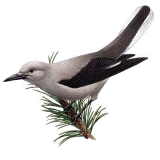Papers in the Biological Sciences
Document Type
Article
Date of this Version
2008
Abstract
One of the more interesting developments in the study of learning and cognition over the past 25 years has been the realization that learning and memory play an important role in the natural world of many animals. As this realization led to research into animal cognition in natural settings, it became clear that such research can make important contributions to our understanding of animal and human cognition. In this chapter, we review one of the areas of research that originally stimulated interest in the role of memory in the field, the ability of many food-storing animals to remember where they have cached their food.
Contents: Introduction ● The Natural History of Food Storage ● Establishing the Role of Memory ● Experimental Evidence for Spatial Memory ● The Characteristics of Cache Memory and Retrieval ● Memory duration ● Memory for cache contents ● Order of recovery ● Proactive and retroactive interference ● Dynamism of memory ● Are all caches created equal? ● Coding of Cache Site Locations ● Landmark use during the recovery of stored food ● Landmarks and the coding of spatial locations ● The Evolution of Spatial Memory in Seed-Caching Animals ● Cache-Site Memory ● Noncache-Site Memory ● Window shopping ● One-trial associative tasks ● Open-room radial maze ● Operant tasks ● Neural Substrates ● Role of the Hippocampus in Spatial Memory ● The Hippocampus in Food-Storing Birds ● Experience, Seasonality, and Neurogenesis in Birds ● Role of the Hippocampus in Mammals ● Other Brain Areas ● Cognitive Pleiotropy ● Conclusions ● References



Comments
characPublished (as Chapter 22) in Learning and Memory: A Comprehensive Reference, Volume I Learning Theory and Behaviour, edited by Randolf Menzel, John H. Byrne, Editor-in-Chief (Amsterdam: Elsevier, 2008), pp. 419–439. Copyright © 2008 Elsevier Ltd. Used by permission.